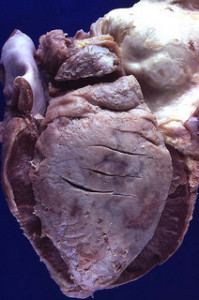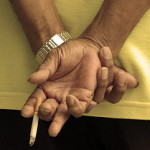I’ve been quite intrigued recently by chronic medical conditions. As the “boomer” generation continues to ages, the more they visit their primary physician or urgent care centers it seems. Is that the result of injury or illness, and if its illness, do older people just get sick easier or are the illnesses linked to an underlying condition? These are some of the questions I’ve been asking myself as I’ve prepared for this weeks blog post.
In my research to get some of those questions answered I looked first at information available from the CDC. I found that chronic diseases and conditions are the most common, costly and preventable of all health problems. Diseases and conditions that were listed as “chronic” include heart disease, stroke, cancer, diabetes, obesity and arthritis, and in 2012 about half of all adults – 117 million people – have one or more chronic health conditions. Seriously? In the United States? In 2012? How can that be, I asked myself. My mind continued to go back to that word preventable. Wow – 117 million people affected every day in some manner by conditions that could be prevented!
Arthritis is the leading cause of disability. Obesity, as discussed in my last post, is a serious health concern with almost 1 in 5 youths aged 2 – 19 being obese and diabetes is the leading cause of kidney failure, lower limb amputations and new cases of blindness among adults. The only thing that caused more lower limb amputations than diabetes was injury. And for those individuals that are dealing with these chronic conditions, what quality of life do they have?
Over the next several blog posts I would like to dig deeper into the individual conditions, their causes, costs and related conditions that are affecting our nation. I hope to learn through this journey as well as offer information to our readers to learn from so I hope you will continue to follow our blog.
For February we will look at heart disease, the symptoms, causes, related conditions, possible treatments and some statistics.
TYPES OF HEART DISEASE AND THEIR SYMPTOMS
Heart disease symptoms depend on what type of heart disease you have.
• Symptoms of atherosclerotic disease, cardiovascular disease caused by narrowed, blocked or stiffened blood vessels that prevent your heart, brain or other parts of your body from receiving enough blood, include chest pain, shortness of breath, pain, numbness, weakness or coldness in the extremities, and pain in the neck, jaw, throat upper abdomen or back.
• Heart disease caused by arrhythmia’s, or abnormal heartbeats, include fluttering in your chest, racing heartbeat, slow heartbeat, chest pain or discomfort, shortness of breath, lightheadedness, dizziness and fainting or near fainting.
• Heart disease that is caused by weak heart muscle, or dilated cardiomyopathy, are breathlessness with exertion or at rest, swelling of legs, ankles and feet, fatigue, irregular heartbeats that feel rapid, pounding or fluttering, dizziness, lightheadedness and fainting.
• There are three types of heart infections,  pericarditis which affects the tissue surrounding the heart, myocarditis which affects the muscular middle layer of the walls of the heart and endocarditis, which affects the inner membrane that separates the chambers and valves of the heart. Symptoms vary slightly with each type of infection and include Fever, shortness of breath, weakness or fatigue, swelling in your legs or abdomen, changes in your heart rhythm, dry or persistent cough and skin rashes or unusual spots.
pericarditis which affects the tissue surrounding the heart, myocarditis which affects the muscular middle layer of the walls of the heart and endocarditis, which affects the inner membrane that separates the chambers and valves of the heart. Symptoms vary slightly with each type of infection and include Fever, shortness of breath, weakness or fatigue, swelling in your legs or abdomen, changes in your heart rhythm, dry or persistent cough and skin rashes or unusual spots.
• Valvular heart disease: the heart has four valves – the aortic, mitral, pulmonary and tricuspid valves which open and close to direct blood flow through your heart. Depending on which valve isn’t working properly, valvular disease symptoms include fatigue, shortness of breath, irregular heartbeat, swollen feet or ankles, chest pain and fainting.
Causes of heart disease also vary by the type of heart disease.
• Heart arrhythmia’s include heart defects you are born with, coronary artery disease, high blood pressure, diabetes, smoking, excessive use of alcohol or caffeine, drug abuse, stress, certain over the counter and prescription medications, dietary supplements and herbal remedies and valvular heart disease.
• Congenital heart defects usually develop while a baby is in the womb. Heart defects can develop as the heart develops, about a month after conception, changing the flow of blood in the heart, but can develop in adults as well. As we age, our hearts structure can change causing a heart defect.
• Cardiomyopathy, which is a thickening or enlarging of the heart muscle, also may depend on the type of cardiomyopathy one has.
o Dilated cardiomyopathy’s cause is often unknown but it may be caused by reduced blood flow to the heart, infections, toxins and certain drugs or it may be inherited from a parent.
o Hypertrophic cardiomyopathy in which the heart muscle becomes abnormally thick is usually inherited by can also develop over time because of high blood pressure or aging.
o Restrictive cardiomyopathy, which causes the heart muscle to become rigid and less elastic, can occur for no known reason, diseases or some cancer treatments.
• Heart infections are most commonly caused by bacteria, viruses and parasites.
• Valvular heart disease has many causes. You may be born with valvular disease or the valves may become damaged by rheumatic fever, infections or connective tissue disorders.
Acute Coronary Syndrome – a general term that includes heart attack and unstable angina.
Angina – a symptom of CAD. Angina is chest pain or discomfort that occurs when the heart muscle is not getting enough blood and may feel like pressure or a squeezing pain in the chest, shoulders, arms neck, jaw or back and may feel like indigestion as well.
Aortic aneurysm and dissection p conditions in which the aorta stretches and ruptures. A rupture is a medical emergency.
Arrhythymias are irregular or abnormally fast or slow heartbeats. Some are serious such as ventricular fibrillation which leads to death unless treated right away.
Atrial fibrillation is a type of arrhythmia that can cause rapid, irregular beating of the hearts upper chambers.
Cardiomyopathy – as stated above, this condition occurs when the heart muscle becomes enlarged or rigid, which can lead to inadequate heart pumping or other problems.
Congenital heart defects – malformation of heart structures that are present at birth and can range from minor to severe. They are the most common type of major birth defect.
Heart failure – often called congestive heart failure because of fluid buildup in the lungs, liver, gastrointestinal tract, arms and legs. It is a serious condition that occurs when the heart can’t pump enough blood to meet the body’s needs, but does not mean that the heart has stopped.
Peripheral arterial disease (PAD) – this is a hardening of the arteries that supply blood to the arms and legs. It usually results from atherosclerosis and blood flow and oxygen to the extremities are low or fully blocked. Symptoms include leg pain, numbness and swelling in the ankles and feet.
Rheumatic heart disease – damage to the heart valves caused by a bacterial infection called rheumatic fever.
Treatment, which is usually the same for both men and women, includes changes in lifestyle, medications, medical and surgical procedures and cardiac rehabilitation.
The goals of treatment are to:
• Relieve symptoms.
• Reduce risk factors in an effort to slow, stop or reverse the buildup of plaque.
• Lower the risk of blood clots forming.
• Widen or bypass plaque-clogged coronary arteries.
• Prevent coronary heart disease complications.
Lifestyle changes include quitting smoking  , following a healthy diet,
, following a healthy diet,
being physically active  , maintaining a healthy weight
, maintaining a healthy weight
Medications used to treat CHD include anticoagulants or blood thinners, aspirin and other anti-clotting medicines, ACE inhibitors, beta blockers, calcium channel blockers, nitroglycerin, glycoprotein IIb – IIIa, statins, fish oil and other supplements high in omega-3 fatty acids. These medications can:
• Reduce your heart’s workload and relieve symptoms of CHD
• Decrease your chance of having a heart attack of dying suddenly
• Lower you cholesterol and blood pressure
• Prevent blood clots
• Prevent or delay the need for a procedure or surgery.
According to the CDC, about 600,000 people die of heart disease every year in the United States – that’s 1 in every 4 deaths – and heart disease is the leading cause of death for both men and women. Coronary heart disease is the most common type of heart disease and, annually 720,000 Americans have a heart attack. Heart disease is the leading cause of death for people of most ethnicities in the United States and coronary heart disease alone costs the United States $108.9 billion each year.
Risk factors include high blood pressure, high LDL cholesterol, and smoking. Approximately 50% of Americans have at least one of these risk factors. Other medical conditions and lifestyles also place people at a higher risk for heart disease including diabetes, being overweight and obese, poor diet, physical inactivity and excessive alcohol use.
A few tips to protect your heart and lower these statistics include:
• Following your doctors’ instructions and staying on your medication.
• Eating a healthy diet that is low in salt, total fat, saturated fat and cholesterol and rich in fresh fruits and vegetables.
• Taking a brisk 10 minute walk 3 times a day 5 days a week.
• Don’t smoke! If you do smoke, quit as soon as possible.
In my next post I will look at nutrition and how it affects our health both for the positive benefits and negative effects.
To your good health,
Barb Post



